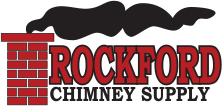Glad to be a new member, and I need help. I’m building a house and am planning on laying up a brick chimney through the center of the house, and plan to use a JA Roby Cook lx on the main floor kitchen. I love the aesthetics of the masonry chimney as the house will be rustic. I have found so much conflicting information and am not sure how to proceed. It seems the options are vitrified clay liner, or a stainless liner, or both? I want it to be safe, and I feel like the stainless liner is the best option. I see flexible insulated liners, double wall stainless, triple wall stainless… any advice would be appreciated . Stovepipe to roof is approximately 16’, there is a basement but no stove with be installed down there. Sorry for the basic questions, but I’m a little lost.
New masonry chimney
- Thread starter Benstown
- Start date
-
Active since 1995, Hearth.com is THE place on the internet for free information and advice about wood stoves, pellet stoves and other energy saving equipment.
We strive to provide opinions, articles, discussions and history related to Hearth Products and in a more general sense, energy issues.
We promote the EFFICIENT, RESPONSIBLE, CLEAN and SAFE use of all fuels, whether renewable or fossil.


